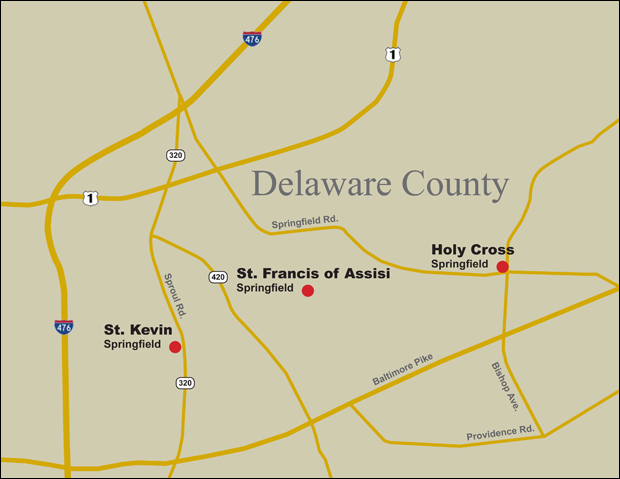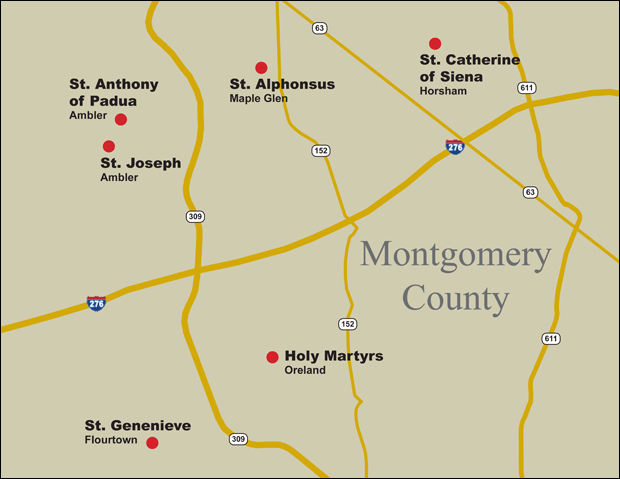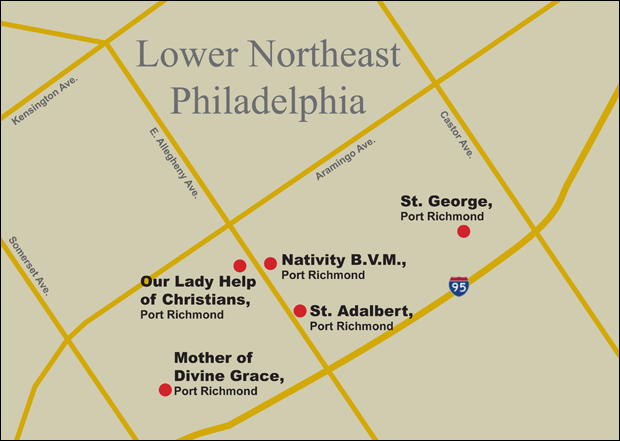Fourteen parishes in the Archdiocese of Philadelphia will begin the next round of Parish Area Pastoral Planning, the archdiocese announced at parish Masses last weekend in the affected areas of Delaware and Montgomery counties and Philadelphia.
While the planning process has led to dozens of parish mergers since it began four years ago, it is intended to “create and maintain vibrant parish communities” in the archdiocese, according to a news release.
The parishes in three areas within close geographic proximity, known as Pastoral Planning Areas (PPAs) of the archdiocese include:
Delaware County (portion of PPA 330):
St. Francis of Assisi, Springfield
Holy Cross, Springfield
St. Kevin, Springfield
Montgomery County (portion of PPA 420):
St. Alphonsus, Maple Glen
St. Anthony of Padua, Ambler
St. Catherine of Siena, Horsham
St. Genevieve, Flourtown
Holy Martyrs, Oreland
St. Joseph, Ambler
Philadelphia’s Port Richmond section (PPA 570):
St. Adalbert
St. George
Mother of Divine Grace
Nativity B.V.M.
Our Lady Help of Christians
The work associated with this round of planning will continue in the next several months, with final results announced in late spring of next year.
[hotblock]
The program of self-study seeks to determine if the parishes, according to the news release, “possess the resources necessary to accomplish their roles in the mission of Christ while remaining sustainable and vibrant faith communities.”
The end result of the process “is to have the strongest possible parishes that are poised for stability, growth and service now and in the future.”
Every parish in the archdiocese will eventually undergo self-study in the planning process. There are currently 219 parishes in the archdiocese, down from 266 when the initiative began in autumn of 2010.
When the new round of study is completed, some of the remaining 125 parishes in 24 Pastoral Planning Areas that have yet to engage in the process will begin to do so after an announcement expected next fall.
The work of the process is conducted in multiple stages. Parish pastors in conjunction with parish leadership, parishioners and the Archdiocesan Strategic Planning Committee (ASPC) review information related to demographic, financial and spiritual activity, and after consultation, recommendations are made. Some recommendations may involve parish mergers, or there may be no change in parish structures but would include a plan to assure future sustainability and pastoral vibrancy.
Every outcome is based on a combination of factors including demographic shifts in Catholic populations, concentrated density of parishes in a limited geographic area, history of Mass attendance and sacramental activity, increasing economic challenges that threaten sustainability, a decrease in the availability of clergy to staff parishes and a review of facilities.
The ASPC, made up of lay persons, priests and archdiocesan personnel, assists all parishes in gauging their viability and engages in dialogue with pastors and parish leadership in providing recommendations.
In the majority of cases, the regional bishop and the dean meet with the pastors as well as their pastoral and finance councils to hear their concerns and receive their recommendations. These are brought before the ASPC and the archdiocesan Council of Priests for their observations and recommendations. Input and consultation from all these groups is provided to the archbishop who makes the final decisions.
PREVIOUS: Clergy assignment changes announced
NEXT: Learn about New Evangelization at local congress next month







Share this story